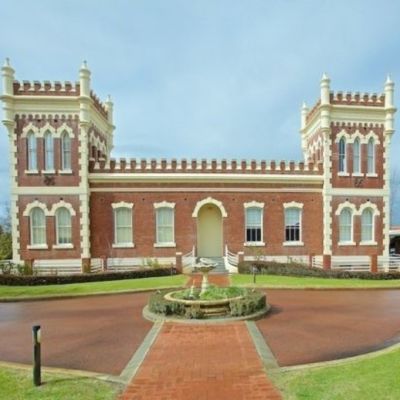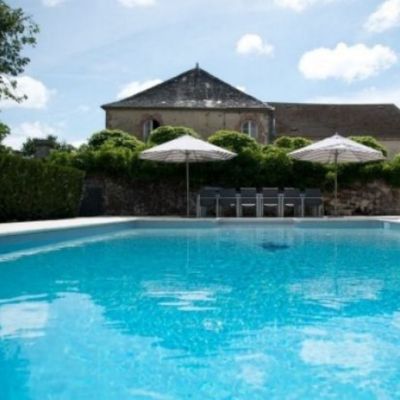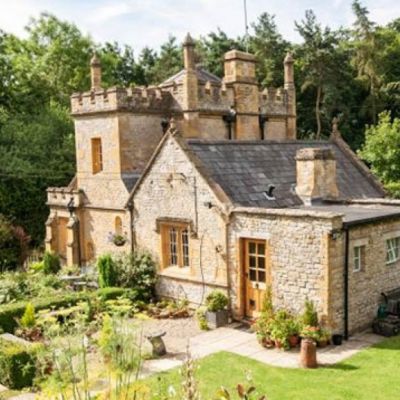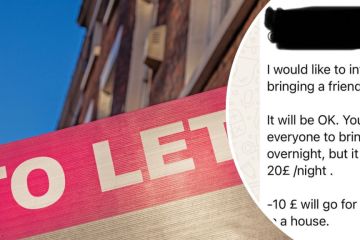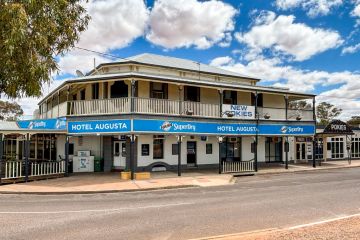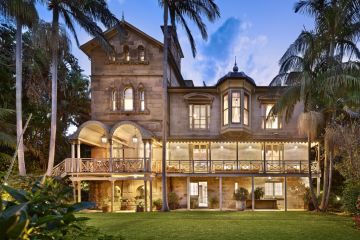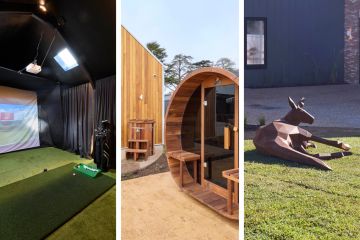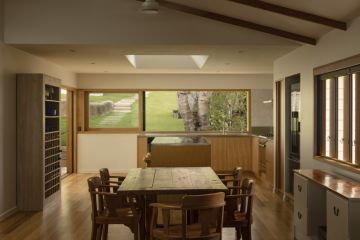'Want a secure home, build a castle': Replica castles taking off in the US
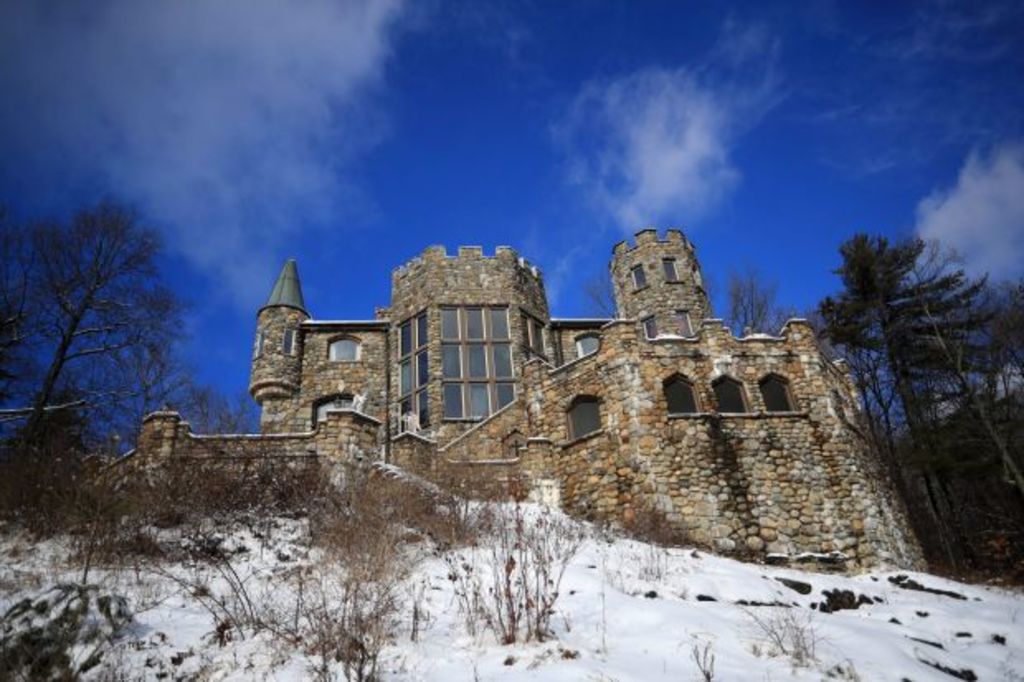
Roger Declements likes to build his castles the medieval way.
He starts with stone – some 900 tonnes of it – and then constructs two parallel walls. After years of work, sometimes an entire decade, these walls add up to what he considers “the most advanced, strongest and most comfortable” abode a person can have.
“If you want a secure home, you build a castle,” said Declements, whose company is called CastleMagic. (And he has: five of them so far, in Washington, Utah and Idaho.)
Unlike castles built centuries ago, his have insulation, modern plumbing and other such amenities, so that people will want to live in them – and pay in the neighbourhood of $US1 million ($1.34 million) to do so.
In the United States, where there are no authentic medieval castles, imitation ones are few and far between. But interest in them has grown, in part because of the popularity of books and shows like Vikings, Downton Abbey, Game of Thrones and the Harry Potter series.
“When people build castles in America, they’re fantasy structures,” said John Sexton, an associate professor of English, who focuses on medieval literature at Bridgewater State University in Bridgewater, Massachusetts.
“True castles are defensive structures. They weren’t thought of as a comfortable place to live. You’re inside of them because there were people outside who wanted you dead.”
John Lavender II took the comfort-and-fantasy approach when he built a castle of his own. He put up a simple wood-frame structure and then hauled in hundreds of tonnes of stone, putting each one in place by hand. Over the past 35 years, he has created an imposing stone redoubt on Lake George in upstate New York.
He has particularly fond memories of working with his son on the cottage. “We stoned that whole place in one summer together, working very hard on it,” he said.
Castle aficionados, particularly those who know a thing or two about the castles that dot the countryside of Europe, scoff at these Americanised versions of ancient European fortresses. Words like “Disney” and “confection” get bandied about to describe them.
But even on the other side of the pond, there has been an apparent resurgence of interest in castles among those with resources to spare.
“When we started doing castles four years ago, we started with 20 or 30,” said Michael Braunholtz, sales director of Prestige Property Group, a realty firm in London.
“We could not believe the number of people who hit our page. It beat chateaux, Monaco, St-Tropez, Venice by a factor of two. The number of people looking for castles was colossal.”
He said his firm sometimes gets as many as 200 requests a week.
While castles like Declements’ in the Pacific Northwest can be had for the price of a one-bedroom condo in Manhattan, Lavender’s life’s work, known as Highlands Castle, is listed for sale at the royal price of $US12.8 million ($17.2 million).
Declements said he sold his last castle, on Lake Pend Oreille, Idaho, for about $US1 million ($1.34 million), which he said was above the value of other homes in the resort area. He is building two new ones now, he said.
This not the first castle boom in the United States. In the early 20th century, men like William Randolph Hearst, the newspaper publisher, and Raymond Pitcairn, heir to a glass company fortune, built castles to house their collections of medieval art and tapestries.
“A lot of monuments in Europe were in ruins and easily exported, because there were no export duties,” said Martha Easton, assistant professor of art history and museum professions at Seton Hall University in South Orange, New Jersey. “They wanted to put them in medieval castles, not any old house.”
Easton’s research focuses on Hammond Castle in Gloucester, Massachusetts, which was built by John Hays Hammond Jr. He invented radio-controlled torpedoes but was fascinated by the past, she said.
These 20th-century builders weren’t always faithful to history. Hammond Castle has a great hall that evokes the interior of a medieval church and stained glass in the windows, but it also has grand fireplaces, which would have been out of place, and a courtyard leading to a swimming pool, Easton said.
Many of the grandest castles from the first boom have become museums: Hearst Castle, which is south of San Francisco; Pitcairn’s Glencairn, outside Philadelphia; and Hammond Castle. Gillette Castle in East Haddam, Connecticut, was built by an actor famous for playing Sherlock Holmes.
But there are smaller relics from that time that persist as homes. They’re just not all that conducive for living in the modern world, or easy to remodel.
Maria Barr, a Realtor at Select Sotheby’s International Realty, is trying to sell an 800-square-metre castle in downtown Albany. It was built in the late 1800s and has ivy crawling up its stone turret.
On the plus side, that much space goes for just under $US800,000 ($1 million) – but there are drawbacks. For instance, there is just one full bathroom in the four-floor castle.
“This isn’t a house where you could move into,” Barr said. “The kitchens and bathroom are really rudimentary. Anyone who buys it is going to have to add more bathrooms.”
High-end castles in Europe, with their Old World splendour, aren’t any easier to sell. Braunholtz said his firm has sold only a few castles, despite the hundreds of thousands of people who look at the listings online.
“The size, scale, price and the amount of money you’d need to maintain it removes a large part of the market,” he said. “You’re down to the top two per cent. Of those people, most would rather have a luxury ski chalet or a property with sea views in St-Tropez.”
He said one of the hardest parts of selling a castle is weeding out the people who couldn’t possibly afford one. Listing a castle “brings in all these Disney, neo-Arthurian fantasy connotations that we don’t want,” Braunholtz said.
“I have other properties that you could call a castle, but I wouldn’t call it a castle because it puts off real buyers.”
He added, “I’m not saying the word ‘castle’ is a poisoned chalice, but it makes it tough.”
Maintaining an old or a new castle is not cheap. Monique Pignet and her husband bought the Chateau de Moh, a 15th-century number in the Loire Valley of France, eight years ago for €1.6 million ($2.39 million) It has eight bedrooms, eight baths, a wine cellar, several kitchens and a beautiful view of the wine region.
Pignet and her husband spent seven years and double the purchase price renovating it.
“What we want now is to earn money from renting it to maintain it,” she said. “This is the only way to own a castle, because nowadays you don’t have servants. When you live in a castle you need a lot of people. You can’t clean it yourself – it’s too huge.”
We recommend
States
Capital Cities
Capital Cities - Rentals
Popular Areas
Allhomes
More
